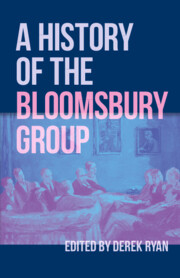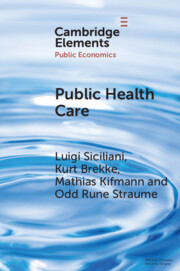Refine search
Actions for selected content:
113 results
Fifth Collection
- from Letters for the Advancement of Humanity
-
- Book:
- Johann Gottfried Herder: Letters for the Advancement of Humanity
- Published online:
- 13 December 2025
- Print publication:
- 22 January 2026, pp 207-266
-
- Chapter
- Export citation
14 - The ‘Public’
- from Part III - The King and His Subjects
-
-
- Book:
- The Cambridge Companion to Late Medieval English Kingship
- Published online:
- 03 November 2025
- Print publication:
- 20 November 2025, pp 278-297
-
- Chapter
- Export citation
10 - This Is Still a Democracy, Isn’t It? (1973–1975)
-
- Book:
- Waging Peace
- Published online:
- 03 November 2025
- Print publication:
- 13 November 2025, pp 394-407
-
- Chapter
- Export citation
5 - The Right to Know
- from Part III - Public Tribunals of Judgment
-
- Book:
- Moral Autopsy
- Published online:
- 18 November 2025
- Print publication:
- 30 October 2025, pp 189-215
-
- Chapter
- Export citation

A History of the Bloomsbury Group
-
- Published online:
- 09 October 2025
- Print publication:
- 23 October 2025
Transferability: Considerations on a Mode of Transculturality in Global Public Literary Humanities
- Part of
-
- Journal:
- Public Humanities / Volume 1 / 2025
- Published online by Cambridge University Press:
- 08 October 2025, e141
-
- Article
-
- You have access
- Open access
- HTML
- Export citation
A Seven-Headed Public: Empire and Satire in Revolutionary Caucasus
-
- Journal:
- Comparative Studies in Society and History / Volume 67 / Issue 3 / July 2025
- Published online by Cambridge University Press:
- 21 May 2025, pp. 622-653
-
- Article
-
- You have access
- Open access
- HTML
- Export citation
5 - The Arrests Begin
- from Part III - Conspiracy Arrested
-
- Book:
- Seditious Spaces
- Published online:
- 06 March 2025
- Print publication:
- 13 March 2025, pp 141-175
-
- Chapter
- Export citation
3 - Seditious Spaces
- from Part II - The Plot
-
- Book:
- Seditious Spaces
- Published online:
- 06 March 2025
- Print publication:
- 13 March 2025, pp 81-108
-
- Chapter
- Export citation

Public Health Care
-
- Published online:
- 10 March 2025
- Print publication:
- 03 July 2025
-
- Element
- Export citation
Chapter Four - Structures of immorality: Rhetoric, building and social hierarchy
-
- Book:
- The Politics of Immorality in Ancient Rome
- Published online:
- 28 February 2025
- Print publication:
- 06 March 2025, pp 137-172
-
- Chapter
- Export citation
12 - Becoming a Public Sociolinguist
- from Part IV - Activism in the Public Space
-
-
- Book:
- Language Activism
- Published online:
- 31 May 2025
- Print publication:
- 06 February 2025, pp 165-180
-
- Chapter
- Export citation
13 - The Elusiveness of Political Causality
- from Part IV - The Erosion of the Epistemological Constitution of Modern Democracy
-
- Book:
- Can Democracy Recover?
- Published online:
- 02 January 2025
- Print publication:
- 16 January 2025, pp 134-138
-
- Chapter
- Export citation
Chapter 10 - Planning and Environment
-
- Book:
- Wind Turbines
- Published online:
- 24 January 2025
- Print publication:
- 19 December 2024, pp 248-273
-
- Chapter
- Export citation
1 - Introduction
-
- Book:
- Understanding Visuals in the Life Sciences
- Published online:
- 31 October 2024
- Print publication:
- 21 November 2024, pp 1-18
-
- Chapter
-
- You have access
- HTML
- Export citation
4 - Illustrations
-
- Book:
- Understanding Visuals in the Life Sciences
- Published online:
- 31 October 2024
- Print publication:
- 21 November 2024, pp 68-93
-
- Chapter
- Export citation
3 - Micrographs
-
- Book:
- Understanding Visuals in the Life Sciences
- Published online:
- 31 October 2024
- Print publication:
- 21 November 2024, pp 43-67
-
- Chapter
- Export citation
6 - Interactive Visuals
-
- Book:
- Understanding Visuals in the Life Sciences
- Published online:
- 31 October 2024
- Print publication:
- 21 November 2024, pp 125-152
-
- Chapter
- Export citation
7 - Infographics
-
- Book:
- Understanding Visuals in the Life Sciences
- Published online:
- 31 October 2024
- Print publication:
- 21 November 2024, pp 153-181
-
- Chapter
- Export citation
5 - Graphs
-
- Book:
- Understanding Visuals in the Life Sciences
- Published online:
- 31 October 2024
- Print publication:
- 21 November 2024, pp 94-124
-
- Chapter
- Export citation
